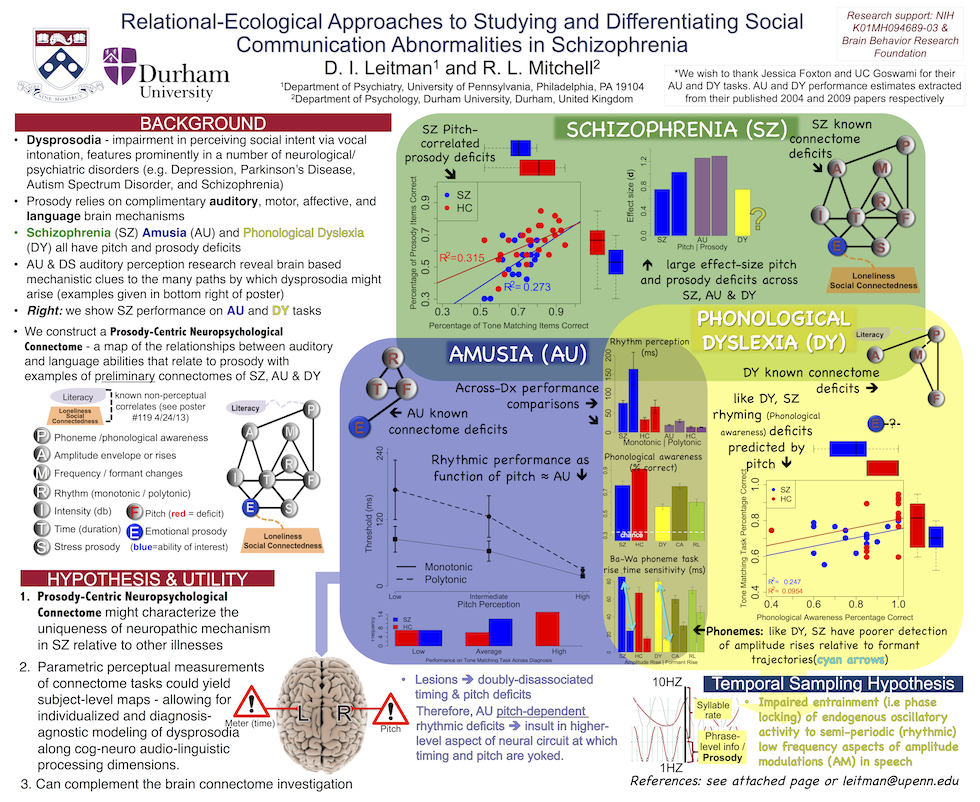
Basic Research Questions
1. How do deficits in auditory and language abilities relate to prosody perception across different diagnoses?
2. Which neuropathic mechanisms impair prosodic perception in schizophrenia and how are these different from other diagnoses?
3. What are the optimal targets for treatment interventions to improve social communication impairments?
Dysprodia, which is impairment in perceiving social intent via vocal intonation, features prominently in a number of neurological/psychiatric disorders (e.g. Depression, Parkinson’s Disease, Autism Spectrum Disorder, Dyslexia, Amusia, and Schizophrenia.) Despite this common impairment, each disorder has a unique set of neural pathway deficits that result in the same functional outcome. Prosody perception relies on complimentary auditory, motor, affective, and language brain mechanisms. Here, we construct a Prosody-Centric Neuropsychological Connectome, which maps relationships between auditory and language abilities that relate to prosody. For more information on these measures, see the Amusia and Dyslexia pages.
This project is being done in coordination with Dr. Rachel Mitchell.
Clinical Application
• By characterizing the precise neuropathic mechanisms by which dysprosodia results, we will be better able to develop treatment interventions which target these deficits, thereby improving social and affective functioning.
• Beyond disorder-level paths, parametric perceptual measurements of connectome tasks could yield subject-level maps, allowing for individualized modeling of dysprosodia along cognitive-neurological audio-linguistic processing dimensions.

Comments are closed.